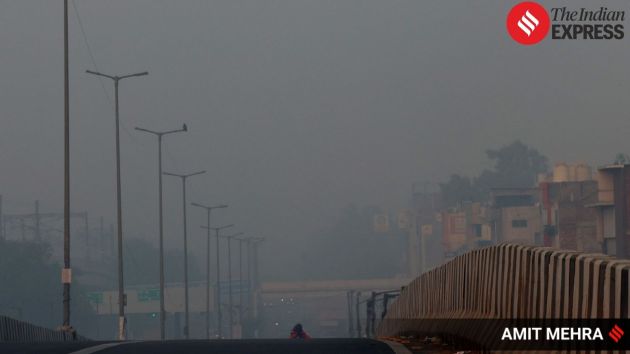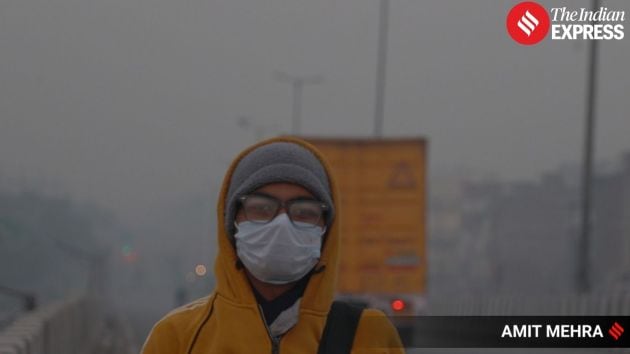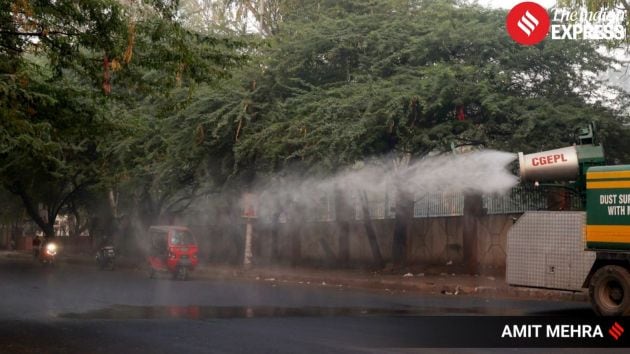Smog smothers Delhi-NCR for second day as AQI stays in ‘severe’ zone
A thick haze blanketed Delhi-NCR for the second straight day, with air quality remaining in the ‘Severe’ category and key areas like Wazirpur and Bawana recording AQI levels above 450.
November 12, 2025 18:01 IST 1 / 9
1 / 9A thick blanket of smog engulfed Delhi-NCR today, pushing air quality into the ‘Severe’ category for the second consecutive day. Early morning commuters struggled through dense haze that limited visibility across key arterial roads (Source: Photo by Amit Mehra)
 2 / 9
2 / 9According to data from the Central Pollution Control Board (CPCB), Delhi’s overall AQI hovered around 420–450, with areas like Wazirpur (458), Bawana (451), and Burari Crossing (439) emerging as the worst-affected zones (Source: Photo by Amit Mehra)
 3 / 9
3 / 9In Gurugram and Noida, visibility dropped sharply as the toxic smog spread across the region. Meteorologists attributed the stagnation to calm surface winds and a temperature inversion preventing pollutants from dispersing (Source: Photo by Amit Mehra)
 4 / 9
4 / 9Vehicular emissions, construction dust, and post-Diwali residue have combined to worsen air quality, leaving residents of the capital battling burning eyes and breathing discomfort (Source: Photo by Amit Mehra)
 5 / 9
5 / 9With pollution levels refusing to drop, authorities have activated Stage III of the Graded Response Action Plan (GRAP), halting construction and demolition activities, and tightening restrictions on diesel vehicles (Source: Photo by Amit Mehra)
 6 / 9
6 / 9Primary schools have shifted to hybrid or online classes for the safety of children, as ordered by the Delhi government in consultation with the Commission for Air Quality Management (Source: Photo by Amit Mehra)
 7 / 9
7 / 9Environmental experts have reiterated that short-term curbs offer limited relief, calling for long-term emission-control measures and a regional strategy to tackle stubble burning, a major contributor to particulate pollution (Source: Photo by Amit Mehra)
 8 / 9
8 / 9Dense smog reduced visibility to as low as 200 metres in parts of Delhi and Gurugram today, disrupting traffic movement across the city (Source: Photo by Amit Mehra)
 9 / 9
9 / 9As evening fell, streetlights glowed through the thick smog while mechanical sweepers and anti-smog guns roamed city roads (Source: Photo by Amit Mehra)











